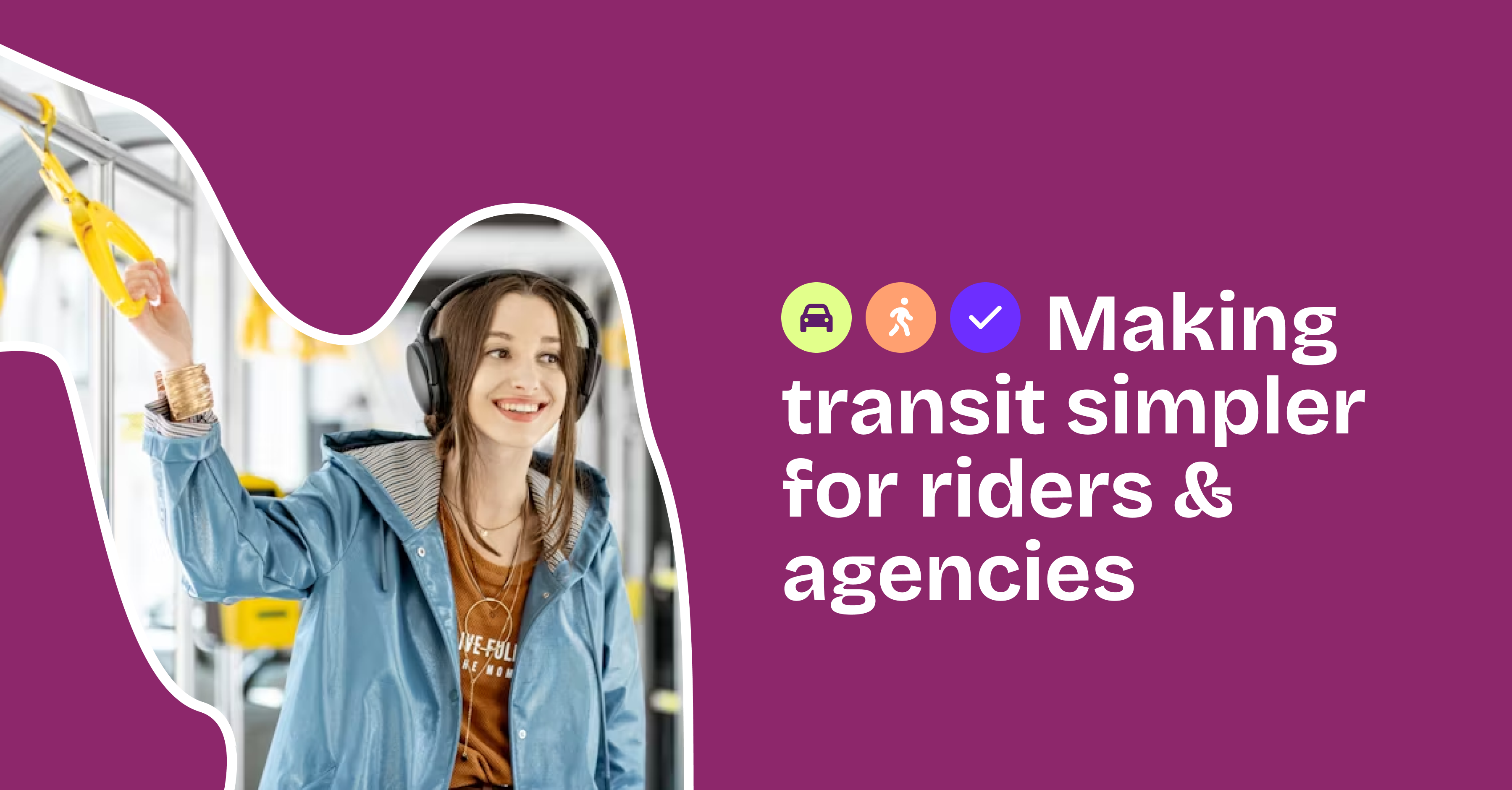How to grow microtransit ridership with traditional transit marketing channels

Launching a new transit service can be scary. Will anyone use it? If you’ve done your homework, including using simulations to map demand and areas of greatest need, then you can be confident that yes, they will. But a ‘build-it-and-they-will-come’ mentality isn’t enough to get seats in seats. That’s where marketing comes in.
Today, it seems like all marketing, or a major chunk of it, happens on the Internet, particularly on social media. Ad spending on platforms like Facebook, Instagram and Tiktok across all industries is expected to grow by almost 11% annually, with a projected market volume of close to $240-million USD by 2025, up from $56-million in 2017. Makes sense: most of us are glued to our phones even when we are out in the real world.
And though the share of traditional advertising spend has fallen in recent years — think billboards, direct mail, and television, print and radio ads — research shows that it still does a better job of creating brand awareness and consideration than its digital counterparts. That doesn’t mean you can ditch your digital marketing. But it does mean that you should create a holistic strategy that seamlessly includes both.
In this article, we will discuss ways you can use traditional advertising to promote your on-demand mobility service and help grow its ridership.
Promote a call to action
Unlike with fixed-route busses, a microtransit and paratransit ride is triggered when a rider makes a specific request for service. But how do they book? Because in many communities on-demand transit is a newer concept, riders may not be aware they need to actually download an app to access the service. Therefore, in order to grow microtransit ridership, you really need to put in the effort to get people to take this action.
Existing fixed-route infrastructure is a great place to market this call-to-action. You can put up an ad with a QR code directing people to your app’s download page at a bus shelter or ticket booth, and distribute leaflets to riders either while they are on the bus or when they disembark. But be strategic about where and when you choose to advertise in this way. If your goal is to promote a first-mile-last-mile microtransit solution for suburban riders, then your agents should be present at key transit hubs during rush hours, when demand is likely to be highest. You can also send out direct mail to households in your target service areas with the QR code to the app store and a longer explanation about the advantages of the service.
Your call-to-action should be clear and concise. In other words, tell them they should consider on-demand and how it can complement existing service by allowing them to go further and faster using transit. For the suburban group that usually hops in their cars after hopping off the bus from downtown, this means alerting them to the fact that they can actually leave their cars at home now because there is a reliable and convenient transit option.
Build awareness
Transit is a vital part of our communities and important to creating more liveable, less congested cities. If you’re introducing a new concept to your transit network or a novel approach like commingled paratransit and microtransit, local news outlets will want to cover it. Reach out to the transportation reporter or the editor at your local newspaper and TV station to cover your new microtransit service. Again, make it clear what makes this service new, who it will benefit, how it can be accessed and why it is exciting. Research shows that earned media coverage, which is media coverage you don’t pay for, resonates the most with consumers and is the most trusted source of information.
You can also pay some newspapers to run sponsored content — that is content you pay for — on their pages or online. This allows you to decide on the type of coverage you want and provides more leeway to insert a call to action, while still allowing you to leverage the media platform’s reputation as a trustworthy source.
Another avenue you might consider is highway billboards. Imagine frustrated car users stuck in traffic during rush hour looking out the window and seeing a billboard that communicates the launch of a microtransit service that can save them time. Here, you want to be really strategic and make one big bold statement instead of trying to convey too much information. Use the data at your disposal to address pain points directly.
Connect with the community
At its core, transit is about connecting people in your community to the services they need or want. Is there a weekly farmer’s market in the area where you’d like to launch a microtransit service? Set up a booth and use it to communicate the new service’s value props. This is a good way to interact with riders one-on-one to properly explain what you’re launching, how they can access it and who it is for. While one-to-one marketing in this way might not seem like a good return on investment, by engaging members of the community and really turning them onto the benefit of your service, you are de facto creating ambassadors who can market your service to their circle. Word-of-mouth can be one of your most powerful marketing strategies because we often trust the opinions of those closest to us above all others.
Ultimately, all marketing is about knowing who to target, when and how. With transit simulations and mobility data from travel surveys, we are able to predict many of the who, what, where, how and why which will then allow you to create a marketing strategy that speaks exactly to your key demographic.
If your research shows that seniors are most likely to benefit from a microtransit service, then visit community centers on bingo nights, organize town halls at different retirement communities to explain the offer and assuage any fears about your new service and be available one-on-one to assist if they need help downloading the app or learning how to use it.
The upfront investment will pay off because people will feel like you have their best interests at heart.

Having applications in Spare not only significantly streamlines our application processing, but it also allows us to more efficiently and effectively serve GATRA riders. GATRA can process applications in real time so riders can start using the service right away.
.png)





